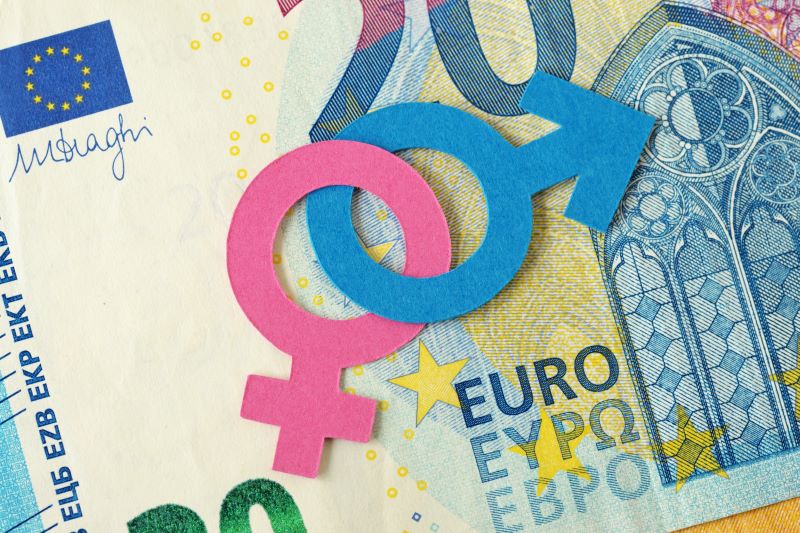Recommended
Two facts on gender gaps stand out. First, given current trends and policies, gender equality is not likely to be achieved. Second, gender equality is macrocritical. In other words, narrowing gender disparities leads to better macroeconomic outcomes—higher economic growth, greater financial stability, and lower income inequality. But achieving gender equality requires a stepped-up effort to design the right macroeconomic, financial, and structural policies that deliver better macroeconomic outcomes and, at the same time, are gender-responsive and help narrow gender disparities.
This raises the question of what are these “right” macroeconomic, financial, and structural policies? As highlighted in our paper “Integrating Gender into Macroeconomic Policies at the IMF,” policymakers have a range of options to deliver positive outcomes for girls and women as well as for the economy.
With traditional growth engines weakening and the medium-term global growth outlook the weakest in decades, the time has come to economically empowering women to spur economic growth.
Macroeconomic consequences of gender disparities
The drivers of gender disparities are multidimensional: unequal access to education, healthcare, infrastructure, finance, real and financial assets, and technology; unequal legal rights; violence against women; a disproportionate burden of unpaid care and domestic work on women; and cultural factors. The low representation of women in decision-making roles reinforces gender inequities by excluding women’s voices, perspectives, experiences, and expertise.
The drivers of gender disparities influence macroeconomic outcomes through unequal opportunities and outcomes. For example, increasing female labor force participation enhances economic growth. Eliminating gender wage gaps lowers income inequality. Including women as users, providers, and regulators of financial services fosters growth and financial stability. Both men and women benefit from financial inclusion, but inequality falls more when women have greater access to finance. Greater gender balance in corporate leadership is associated with improved firm performance and in political leadership with higher infrastructure spending and female educational attainment.
Policies
Polices that narrow macro critical gender gaps are wide-ranging and often interconnected. They include fiscal, financial sector, legal, and labor market reforms, all of which need to be tailored to country-specific circumstances. To better inform policy design and implementation, countries should commit to regularly collect and analyze gender-disaggregated data.
Gender-responsive fiscal policy can be instrumental in narrowing gender gaps. In some cases, individual rather than household taxation can help address implicit biases against secondary earners (such as higher marginal tax rates), who are often women. Tax credits or deductions for childcare costs enhance incentives for women to work. Revenue administrations should eliminate enforcement bias to reduce barriers to women’s formal employment and entrepreneurship.
The composition of public spending on infrastructure and social protection should be designed to facilitate women’s integration into the workforce and facilitate equality in schooling. Examples include water and sanitation, safe transportation facilities, digital services, and targeted social assistance such as conditional cash transfer programs for quality childcare and elder care facilities.
Tackling barriers to financial inclusion starts with establishing national identification systems, such as Aadhar in India. Aadhar has facilitated financial inclusion in many ways: the gender gap in bank account ownership has closed. In 2021 it was 78 percent for men and women (up from 44 percent for men and 26 percent for women in 2011), per FINDEX Database. Digital accounts under the control of women are helping eliminate leakages of direct salary and benefit transfers, facilitating alternative sources of collateral and of building credit histories, and promoting digital and financial literacy. However, a more concerted effort is needed globally.
Access to infrastructure such as mobile phones, computers, and internet for women remain barriers in many parts of the world. Hiring more female loan officers in financial institutions should be stepped up as evidence shows that it increases women’s access to loans. Central banks should promote the adoption of proportionate risk-based regulation and supervision of small and non-complex institutions since they cater more to underserved customers, including women.
Legal barriers to women’s economic empowerment span constitutional, property, family, labor and wages, social security, pension, and tax laws. These laws cover fundamental rights to citizenship, freedom of movement, legal age to marry, heading a household, equal guardianship of children, marital property regimes, divorce, ownership and disposal of assets, access to credit, inheritances, and permission to work without male consent. Specific laws are often needed to eradicate violence against women.
Laws on business registration, ownership of assets, and access to credit often place greater economic and administrative burdens on women, thus discouraging their participation in the formal sector. To increase female entrepreneurship, reforms should remove biases against women who open and run businesses. Greater flexibility in working hours facilitates women’s participation in the workforce. Stringent regulations that raise the costs of childcare can also increase the costs of female labor market participation.
Addressing social, cultural, and religious norms is one of the most complex and arguably the least understood long-standing barriers facing women. Studies find that economic processes shape and in turn affect cultural norms, as do the application of policies eliminating biases against women. Anecdotal evidence points to the power of leaders to prioritize the issue and start transforming societies, such as recent initiatives in India, Saudi Arabia, and Tanzania.
Fostering macroeconomic stability and promoting gender equality
A critique often heard about the role of macroeconomic policies and gender equality is that fiscal consolidation worsens outcomes for women. A conclusion of this line of argument, therefore, is that fiscal policy should not be tightened.
Yet, macroeconomic and financial stability are important goals in themselves and necessary for a well-functioning economy. The absence of macroeconomic stability (such as financial and debt crises) greatly prolongs and exacerbates the effect of adverse shocks on the economy and on the most vulnerable, including women. Building adequate fiscal and financial buffers, and thus promoting sound macroeconomic policies, helps better achieve the dual goal of better outcomes for women and for the economy.
In this example, tightening fiscal policy should not be rejected if it is needed to achieve macroeconomic stability. At the same time, applying a gender lens to fiscal consolidation policies helps identify the most vulnerable, design possible targeted transfers, and orchestrate the speed of adjustment. Gender-responsive macroeconomic policies can thus mitigate the negative impact of women and, better still, narrow gender gaps.
Mainstreaming gender in macroeconomic policies
Policymakers should systematically and intentionally integrate a gender lens into their macroeconomic policies since their core goals of achieving higher economic growth, financial stability, and lower inequality are well aligned with reducing gender disparities. This means that the responsibility and accountability for reducing gender disparities must not rest solely with ministries in charge of women and girls but must extend to include ministries of finance, central banks, financial regulatory authorities, and in fact, all ministries. A national gender mainstreaming strategy is an opportune vehicle to start doing so.
For its part, the IMF is seeking to fill a critical gap in the global policy debate on gender equality by focusing on its macroeconomic aspects. Through the implementation of its own gender mainstreaming strategy launched in July 2022, the IMF is seeking to integrate gender into its core surveillance, lending, and capacity development functions. The IMF covered 22 countries in the first year of implementation of the strategy and plans to cover more than 30 countries in the second year. Examples include Mexico, Niger, Saudi Arabia, South Korea, and Türkiye. The IMF is committed to gradually expanding and deepening its coverage on gender in member countries going forward, and is engaging with international and domestic partners such as the World Bank and CGD in these efforts.
The views expressed in this blog are those of the authors and do not necessarily represent the views of the IMF, its Executive Board, or IMF management.
Disclaimer
CGD blog posts reflect the views of the authors, drawing on prior research and experience in their areas of expertise. CGD is a nonpartisan, independent organization and does not take institutional positions.
Image credit for social media/web: Adobe Stock







